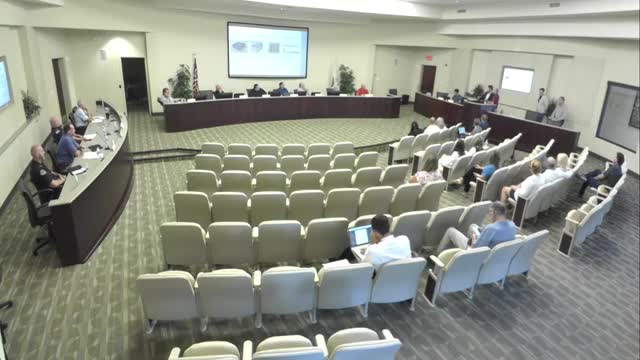Tesla's Megapack Fire Safety Protocols Under Scrutiny
August 20, 2024 | Ripon City, San Joaquin County, California
This article was created by AI summarizing key points discussed. AI makes mistakes, so for full details and context, please refer to the video of the full meeting. Please report any errors so we can fix them. Report an error »

In a recent government meeting, officials discussed the intricacies of Tesla's battery management systems and the safety protocols surrounding their Megapack technology. The assembly of these systems occurs in Lathrop, California, where Tesla integrates the battery management software and hardware, while sourcing basic components from China. The conversation highlighted the significant role of federal investment tax credits in financing these projects, which attract major investors.
A key focus was on the safety measures in place to mitigate fire risks associated with the Megapack units. The discussion revealed that the latest model, the Megapack 2 XL, features 24 battery modules, an increase from the previous model's 19 modules. This design aims to enhance efficiency while maintaining safety standards. Officials explained that in the event of a thermal runaway—a scenario where a battery overheats and potentially ignites—the system is designed to control the fire's spread, with tests indicating that it could take between one to eight hours for a fire to burn out.
Concerns were raised about the proximity of the Megapack units to Highway 99, prompting questions about evacuation protocols during potential fire incidents. Officials reassured attendees that while emergency services often take precautionary measures, such as shelter-in-place orders, air quality monitoring typically shows no dangerous levels of toxins after such events. They emphasized that these responses stem from a cautious approach, given the relatively new nature of battery technology and its associated risks.
The meeting also touched on the operational aspects of the facility, which will be remotely monitored, with staff available for maintenance and emergency response. Tesla's monitoring systems are designed to alert local fire departments immediately in case of emergencies.
Overall, the discussions underscored the balance between advancing battery technology and ensuring community safety, with officials committed to transparency and ongoing education regarding the risks and benefits of these energy solutions.
A key focus was on the safety measures in place to mitigate fire risks associated with the Megapack units. The discussion revealed that the latest model, the Megapack 2 XL, features 24 battery modules, an increase from the previous model's 19 modules. This design aims to enhance efficiency while maintaining safety standards. Officials explained that in the event of a thermal runaway—a scenario where a battery overheats and potentially ignites—the system is designed to control the fire's spread, with tests indicating that it could take between one to eight hours for a fire to burn out.
Concerns were raised about the proximity of the Megapack units to Highway 99, prompting questions about evacuation protocols during potential fire incidents. Officials reassured attendees that while emergency services often take precautionary measures, such as shelter-in-place orders, air quality monitoring typically shows no dangerous levels of toxins after such events. They emphasized that these responses stem from a cautious approach, given the relatively new nature of battery technology and its associated risks.
The meeting also touched on the operational aspects of the facility, which will be remotely monitored, with staff available for maintenance and emergency response. Tesla's monitoring systems are designed to alert local fire departments immediately in case of emergencies.
Overall, the discussions underscored the balance between advancing battery technology and ensuring community safety, with officials committed to transparency and ongoing education regarding the risks and benefits of these energy solutions.
View full meeting
This article is based on a recent meeting—watch the full video and explore the complete transcript for deeper insights into the discussion.
View full meeting
